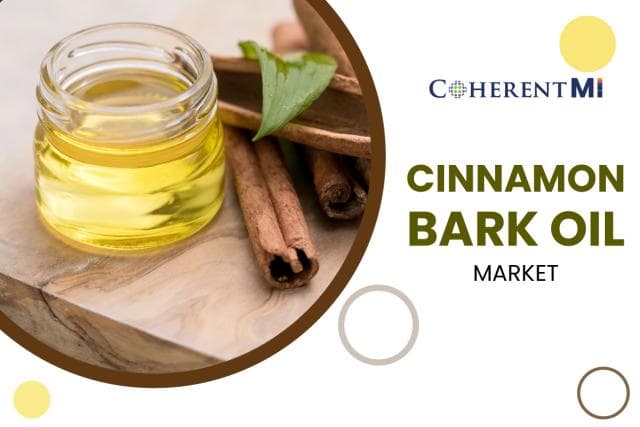Cinnamon has been a treasured spice for thousands of years and cinnamon bark oil is extracted from the outer bark of the cinnamon tree through steam distillation. Originating from Sri Lanka and southern India, cinnamon bark has been extensively used in traditional Ayurvedic and Chinese medicine for its noteworthy medicinal properties. Today, cinnamon bark oil remains a popular essential oil valued for its delightful fragrance and diverse therapeutic applications.
Composition of Cinnamon Bark Oil
Cinnamon bark oil contains a variety of active components that contribute to its remedial qualities. However, its two main phenolic compounds called cinnamaldehyde and eugenol are responsible for most of its therapeutic effects. Cinnamaldehyde gives cinnamon its distinctive scent and taste and has powerful antioxidant and anti-inflammatory properties. Eugenol possesses analgesic, antibacterial and antifungal actions. Lesser constituents include benzaldehyde, linalool, limonene and hexanoic acid which aid in cinnamon bark oil's effectiveness as well. The potency and therapeutic strength of cinnamon bark oil largely depends on the concentrations of these biologically active phenolic compounds.
Fragrant Properties
Apart from lending its warm, sweet-spicy fragrance to culinary delights and household items, cinnamon bark oil is a popular choice in aromatherapy due to its uplifting and comforting scent. Only a few drops are adequate to diffuse its alluring aroma throughout a room. Breathing in cinnamon bark oil's fragrance can help boost mood and diminish stress and negative emotions. Applying it topically in massage oils also helps relax muscles and joints. Additionally, when blended with carrier oils having mood-lifting properties like grapeseed and sweet almond oil, cinnamon bark oil creates an invigorating body oil for daily use. Its pleasing scent can be enjoyed in potpourri, air fresheners, sachets and linen sprays as well.
Antioxidant Capabilities
Abundant research has demonstrated cinnamon bark oil's powerful antioxidant potential. Both cinnamaldehyde and eugenol neutralize harmful free radicals and counteract oxidative stress in cells. As a potent antioxidant, cinnamon bark oil may play a role in protecting cells from damage linked to chronic diseases. Test tube and animal studies show that cinnamon bark oil has antioxidant activity comparable or superior to synthetic antioxidants like BHA and BHT. When taken internally or applied topically, it can help slow down signs of aging and lower risk of certain cancers by mitigating oxidative stress at a cellular level.
Anti-inflammatory Action
Inflammation has been implicated in a variety of acute and chronic health conditions. Here, cinnamon bark oil's anti-inflammatory properties assume significance. Tests reveal that eugenol is a potent anti-inflammatory compound which inhibits the activity of COX-2 and lipoxygenase enzymes involved in inflammation signaling pathways. Topical application of cinnamon bark oil eases itchy, irritated or inflamed skin and reduces joint pain and swelling when combined with carrier oils. It aids in lowering C-reactive protein, an inflammatory biomarker. Taking cinnamon bark oil internally through capsules or adding it to smoothies or homemade remedies provides relief from inflammatory issues like arthritis.
Antimicrobial Potency
The antimicrobial virtues of cinnamon bark oil make it extensively employed to disinfect surfaces and aid wound healing. Research unveils that cinnamaldehyde, eugenol and other components kill bacteria, fungi, molds and viruses on contact. Cinnamon bark oil exhibits damage to cell membranes and intracellular features of various disease-causing microbes. Studies have shown successful inhibition of problematic pathogens like Staphylococcus aureus, E. coli, Salmonella, Listeria, Candida albicans and more. Topical application or humidifier dispersal helps eliminate airborne germs and supports immune defense against infections. It can foster wound healing and reduce risk of infection when used to dress cuts, grazes and acne.
Antidiabetic Effects
Nutraceuticals like cinnamon bark oil that showcase antidiabetic qualities gain significance in disease management. Studies indicate that cinnamon extracts may enhance glucose metabolism and upregulate cellular insulin receptors, making cells more responsive to insulin. Cinnamaldehyde compounds increase intracellular glucose oxidation and utilization by promoting healthy insulin signaling mechanisms. Test tube and animal research involving cinnamon bark oil or its components have revealed reduction in blood glucose, total cholesterol and triglyceride levels. Preliminary human studies too affirm improvement in glycemic control for both type 1 and 2 diabetes when cinnamon supplementation is combined with traditional antidiabetic medications and lifestyle changes. More research is still warranted in this area.
Other Potential Benefits
A few other promising applications of cinnamon bark oil presently under investigation based on initial cell/animal research include antitumor activity against various cancer cell lines, antibacterial impact on multidrug-resistant pathogens, nootropic effects in maintaining cognitive functions, lowering blood pressure parameters for cardiovascular protection, and relief from nausea, vomiting and diarrhea. Its use as a carbonated soft drink or tea flavoring and preservative is gaining traction as well. Overall, cinnamon bark oil remains an ancient yet powerful natural remedy for wellness due to its pharmacologically active cinnamaldehyde, eugenol and multiple mechanisms of therapeutic action.
Concluding Remarks
In summary, cinnamon bark oil as an Ayurvedic essential oil packs a variety of healing virtues. With a pleasing aroma and natural constituents, it can enhance both physical and emotional well-being when used topically, aromatically or internally. Further clinical studies are still required to validate many of its promising applications noted in preliminary reports. Homemade ingestion or application should be limited to therapeutic amounts under medical guidance. More research will help explore new frontiers for this historically important medicinal aromatic from the bark of cinnamon trees.
